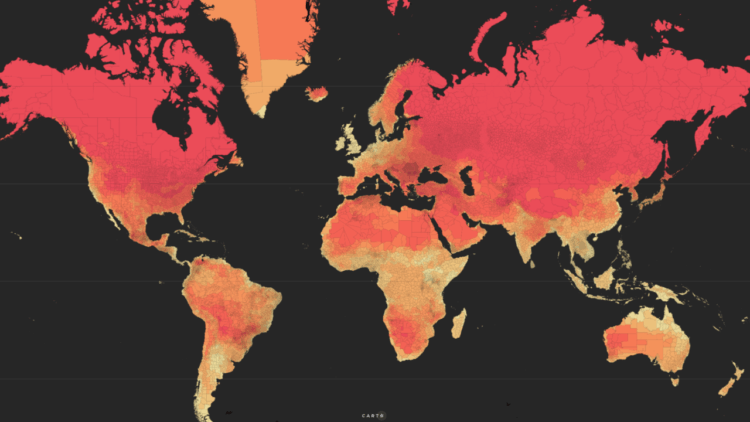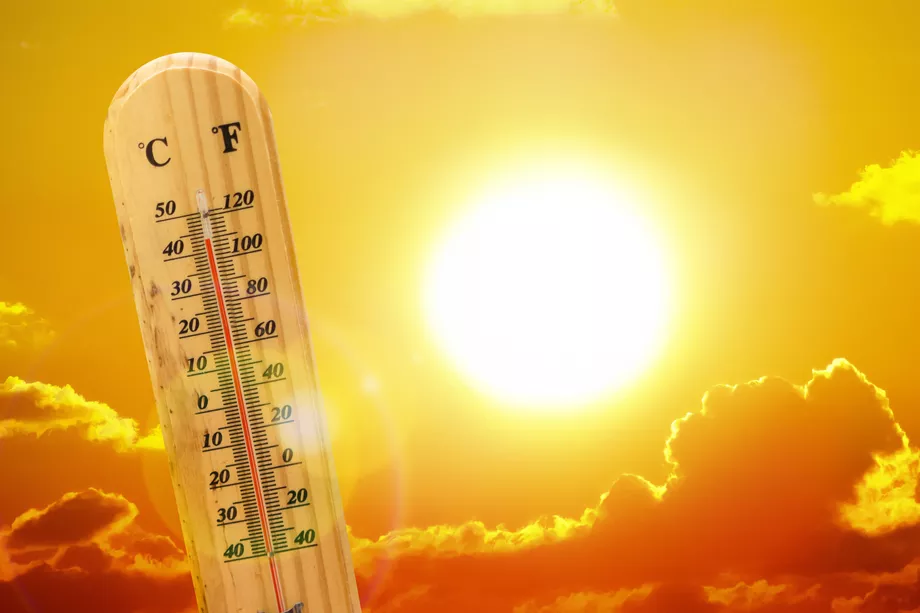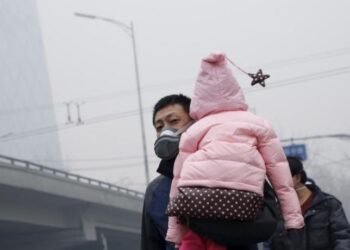As Earth’s average temperature continues to climb, the effects of global warming extend far beyond melting ice caps and rising sea levels. A growing body of evidence shows that warming temperatures exacerbate respiratory conditions by increasing airway inflammation. For individuals with asthma, chronic obstructive pulmonary disease (COPD), or other respiratory illnesses, the combination of heat stress and polluted air can be a dangerous one. This article explores the intricate ways in which global warming heightens airway inflammation risk, the mechanisms at play, vulnerable populations, and potential strategies for mitigation.
Understanding the Link Between Temperature and Respiratory Health
Global warming influences respiratory health through multiple interconnected pathways:
A. Air Quality Deterioration
Warmer temperatures accelerate the formation of ground-level ozone—a potent respiratory irritant—by speeding the chemical reactions between nitrogen oxides (NOₓ) and volatile organic compounds (VOCs). High ozone episodes coincide with heatwaves, compounding the risk for airway irritation and inflammation.
B. Allergen Proliferation
Increased carbon dioxide (CO₂) levels and warmer temperatures foster longer growing seasons and higher pollen production in plants. Extended pollen seasons mean users of allergy medications face longer exposure, which amplifies underlying inflammatory processes within the airways.
C. Airborne Particulate Matter Changes
Climate-driven droughts and wildfires produce fine particulate matter (PM₂.₅) that lodges deep in the lungs, triggering oxidative stress and inflammatory responses. As wildfires become more frequent and severe, communities face prolonged exposure to respiratory hazards.
Biological Mechanisms of Temperature-Induced Inflammation
1. Heat Stress and Airway Hyperreactivity
Elevated ambient temperatures place stress on the body’s thermoregulatory systems. Heat stress increases breathing rates, drawing more pollutants and allergens into the respiratory tract. This elevated inhalation enhances contact between irritants and airway tissues, promoting:
-
Upregulation of pro‑inflammatory cytokines (e.g., IL‑6, TNF‑α)
-
Enhanced recruitment of immune cells (neutrophils, eosinophils)
-
Increased oxidative stress and tissue damage
2. Oxidative Stress Pathways
Exposure to ozone and PM₂.₅ generates reactive oxygen species (ROS) within airway epithelial cells. ROS disrupt cellular components, leading to:
-
Lipid peroxidation of cell membranes
-
Activation of nuclear transcription factors (NF‑κB)
-
Overexpression of adhesion molecules that attract inflammatory cells
3. Epigenetic Modifications
Chronic exposure to heat‑related pollutants can induce epigenetic changes in airway cells, such as DNA methylation and histone modifications. These alterations may perpetuate inflammatory gene expression patterns, contributing to long‑term airway remodeling and hyperresponsiveness.
Vulnerable Populations
Global warming does not impact all groups equally. Certain demographics face higher risks:
A. Children
Developing lungs and immune systems render children more susceptible to pollutant‑induced inflammation. Frequent outdoor play during heatwaves increases exposure to high‑ozone days.
B. Elderly Individuals
Age‑related declines in lung function and thermoregulation impede the elderly’s ability to cope with heat stress, compounding risks from pollutant exposure.
C. People with Pre‑Existing Respiratory Conditions
Asthma, COPD, bronchiectasis, and cystic fibrosis patients already experience baseline airway inflammation; climate‑amplified pollutants and allergens exacerbate disease severity and increase hospital admissions.
D. Low‑Income and Marginalized Communities
Limited access to air‑conditioned environments, green spaces, and healthcare services intensifies vulnerability. Urban heat islands, often found in under‑resourced neighborhoods, further elevate temperatures and pollutant concentrations.
Geographic Heat Islands and Urban Airflow Dynamics
Urban heat islands (UHIs) are metropolitan areas that experience significantly higher temperatures than their rural surroundings due to heat‑absorbing materials like asphalt and concrete. UHIs contribute to heightened ozone formation and reduce nighttime cooling, prolonging the window of respiratory stress.
Key factors in UHI‑related airway inflammation:
A. Reduced Vegetation
Limited tree cover diminishes natural cooling and pollutant filtration.
B. Traffic Congestion
High concentrations of vehicle exhaust increase NOₓ and VOC emissions, feeding ozone formation.
C. Building Geometry
Tall buildings can trap heat and pollutants at street level, reducing natural airflow and diluting contaminants.
Health Outcomes Attributed to Climate‑Driven Airway Inflammation
Increased Asthma Exacerbations
Studies link each 1 °C rise in daily temperature with a measurable uptick in emergency room visits for asthma attacks. The combination of heat and high ozone days correlates with greater use of rescue inhalers and corticosteroid interventions.
COPD Flare‑Ups
COPD patients experience more frequent acute exacerbations and hospitalizations during heatwaves, often driven by concurrent peaks in ozone and particulate matter.
Chronic Bronchitis Incidence
Long‑term exposure to climate‑amplified pollutants has been associated with new‑onset chronic bronchitis in urban dwellers, indicating that warming‑related air quality decline can initiate inflammatory respiratory diseases.
Mitigation and Adaptation Strategies
A. Policy and Regulation
-
Strengthened Air Quality Standards
Lower thresholds for ozone and PM₂.₅ during heatwaves to trigger public health alerts and temporary emissions controls. -
Vehicle Emissions Reductions
Implement stricter tailpipe standards and promote electric vehicle adoption to cut NOₓ and VOC emissions. -
Urban Planning for Cooling
Mandate green roofs, reflective building materials, and expanded tree canopy to mitigate urban heat islands.
B. Healthcare Interventions
-
Early Warning Systems
Real‑time air quality and temperature forecasting paired with mobile alerts can help high‑risk individuals adjust activities and medication use. -
Targeted Education
Outreach programs for patients on managing heat‑related risks, recognizing symptom escalation, and maintaining medication adherence. -
Telehealth Expansion
Remote care during heatwaves reduces travel‑related pollutant exposure and eases healthcare system burdens.
C. Individual Prevention Measures
A. Indoor Air Quality Control
Use high‑efficiency particulate air (HEPA) filters and avoid opening windows on high‑pollution or high‑ozone days.
B. Heat Management
Stay hydrated, seek air‑conditioned environments, and limit outdoor exertion during peak heat and pollution hours.
C. Allergen Avoidance
Monitor pollen forecasts, shower after outdoor activities, and change clothes to minimize allergen loading.
Research Gaps and Future Directions
While the link between global warming and airway inflammation is well established, further investigation is needed to:
A. Quantify Combined Exposures
Disentangle the synergistic effects of heat stress, ozone, and particulate matter on airway inflammation.
B. Longitudinal Cohort Studies
Track respiratory health outcomes in diverse populations over decades to capture chronic climate‑related impacts.
C. Intervention Efficacy
Evaluate which policy and individual measures most effectively reduce inflammation episodes during heatwaves.
Conclusion
Global warming poses a clear and present threat to respiratory health by intensifying airway inflammation through multiple pathways: deteriorating air quality, heightened allergen exposure, and increased wildfire smoke. Vulnerable groups—including children, the elderly, and those with pre‑existing conditions—face elevated risks, particularly in urban heat islands and under‑resourced communities. A multi‑pronged approach combining policy action, healthcare interventions, urban planning, and individual preventive measures is essential to mitigate these harms. As temperatures continue to rise, proactive adaptation and rigorous research will be critical to protecting airway health in a warming world.













